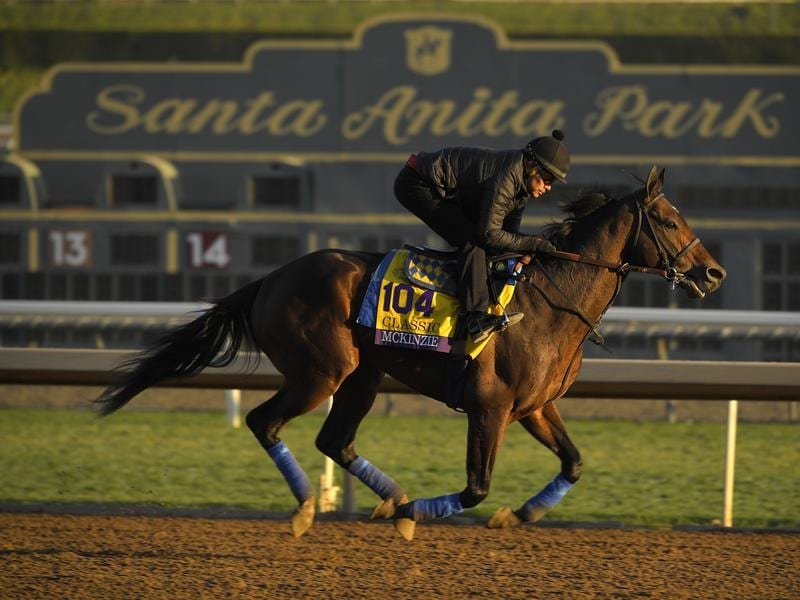Tensions have been running high at troubled Santa Anita Park ahead of the Breeders’ Cup meeting.
Thirty six horses have died at the famed Southern California venue since the season began in late December and although the track’s safety record has improved since it implemented drug reforms in March, some trainers are still feeling uneasy.
“If they don’t have some anxiety they probably are not paying attention or they aren’t telling you the truth,” Terry Finley, president and chief executive of West Point Thoroughbreds, told Reuters.
Finley has two horses in Breeders’ Cup races on Friday (Saturday AEDT).
“Anybody that cares about this business worries because there is nobody harder hit when a horse is hurt and put down than the owners, the trainer and the people around them.
“We’re concerned but things are starting to change, our culture is starting to change.”
Santa Anita Park has been under scrutiny over its alarmingly high fatality rate, which made international headlines and prompted investigations by the Los Angeles County district attorney and the California Horse Racing Board.
The attention has given a boost to the Horseracing Integrity Act, a federal bill that would set up a national anti-doping authority ban on the use of drugs on race day.
Six horses have died during the current meeting, the most recent being a filly euthanised after injuring her right front leg during a race on Sunday.
The changes implemented by the track, which included a ban on the use of race day medications that can mask existing injuries and lead to breakdowns, will be in effect during the Breeders’ Cup.
The venue will have a record number of veterinarians on hand to examine each horse thoroughly before it is allowed to compete and quickly respond to injuries, officials said.
Breeders’ Cup chief executive Craig Fravel says he hopes the public understand that the industry cares deeply about its horses and is making extraordinary efforts to keep them safe.
“You’d be naive not to acknowledge that people are watching very carefully and that’s why we’re paying so much attention to injury prevention,” Fravel said.
“Although there have been changes in our approaches this is something we’ve been committed to for many, many years. We value this safety program immensely.”
Finley said he hoped the fatalities at Santa Anita would serve as a catalyst for change and lead to greater accountability and national anti-doping standards.
“We are going to take as many positives out of these troubles as possible,” he said.
